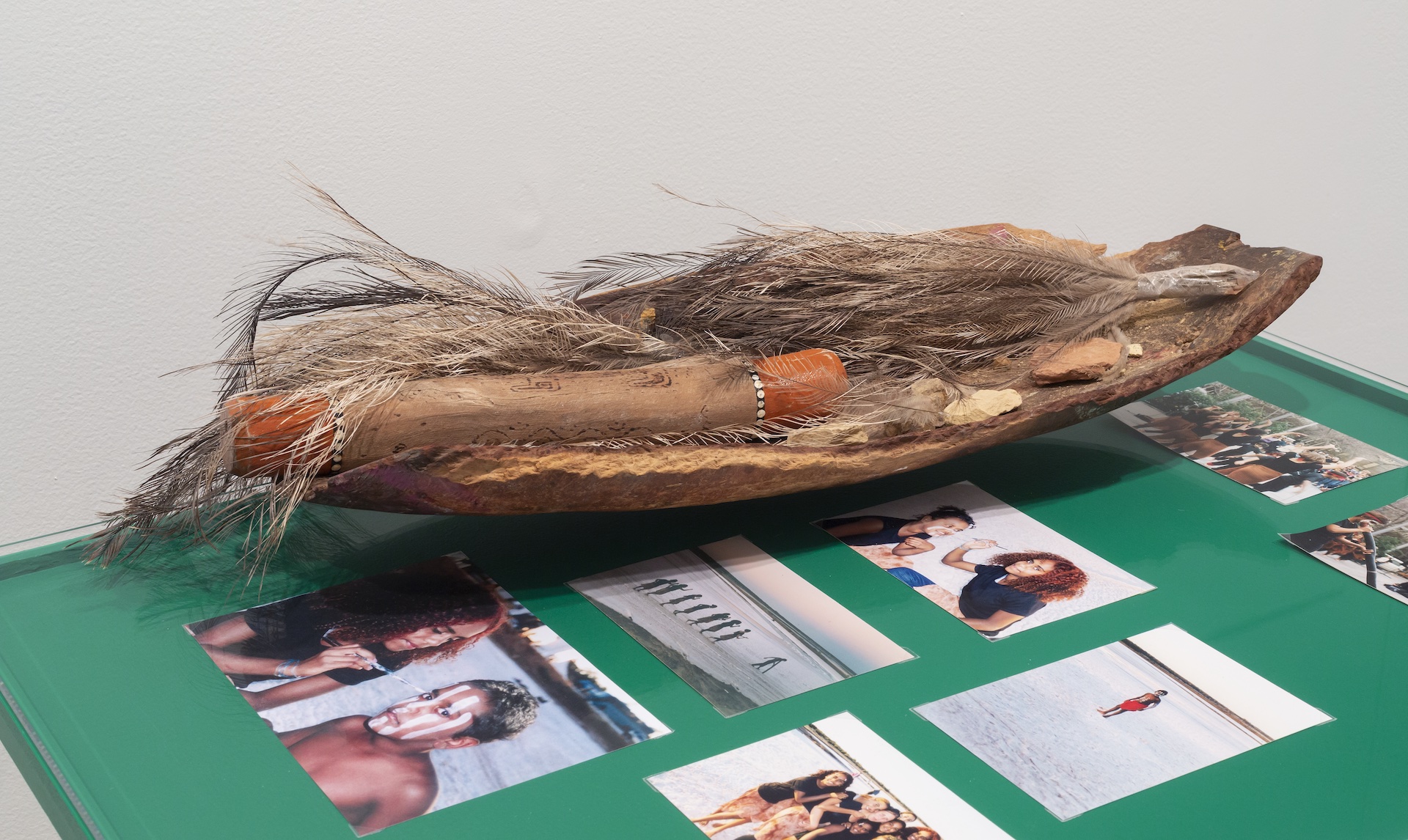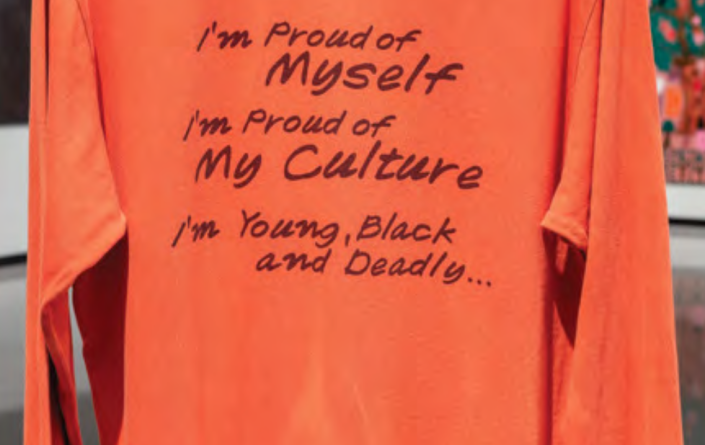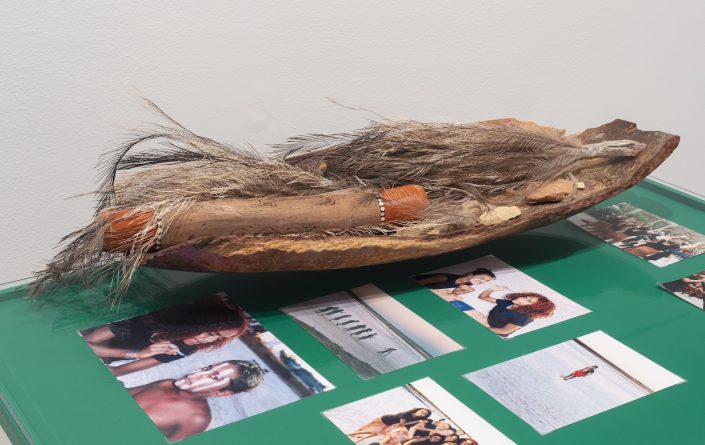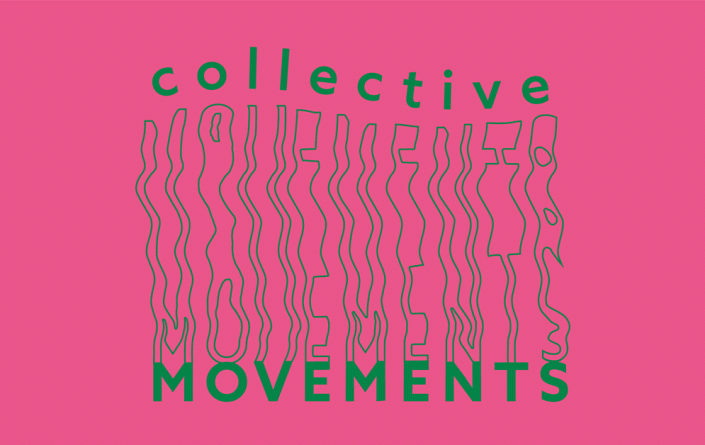Latje Latje Dance Group Mildura
1978–2005
Latje Latje Dance Group Mildura was one of the earliest and longest-running organised traditional and contemporary dance groups in Victoria. They formed in 1978 after local Koorie children attended a cultural camp at Camp Jungai and were taught dances by notable Aboriginal leaders, Yamatji man Ernie Dingo and Senior Elder and artist of the Maḏarrpa clan, Yolŋu people, Donald Nuwandjali Marawili. Both men gave permission for the children to continue practicing the dances and to teach them to other young Koorie students.
The group connected with other dance groups such as the Mornington Island Dancers and Bangarra Dance Theatre. They travelled to perform in events including the International Dance and the Child conference in Auckland in 1985, and supported Yothu Yindi at the Port Fairy Folk Festival in 1997.
The archival project represented in Collective Movements begins the process of documenting Latje Latje Dance Group Mildura’s story for future generations to access. It seeks to commemorate spaces that have been important to regional Koorie communities, created through community spirit, resilience and a desire for the continuation of cultural practice catered towards the empowerment of young people.
Exhibited in Collective Movements:
Latje Latje Dance Group Mildura T-shirt, pamphlet and photos from the 1980s through to the 2000s of performances and concerts in
and around Mildura and Melbourne; rehearsals and getting ready to perform; a 1980s workshop in Mildura with Bangarra Dance Theatre; the group’s trip to Auckland, Aotearoa (New Zealand) for the Dance and the Child International conference in 1985; and Peter Clarke dancing for Princess Diana and Prince Charles at the inauguration of the Prince and Princess of Wales Fountain Plaza, Mildura, 1985. Thanks to Sonja Hodge and the estate of Peter Clarke, Helen Healy and Aaron Clarke for the loan of these materials.
Historically, archives have been sources of pain for our communities; when we reclaim them to honour the ongoing legacies of our people, they can be sources of celebration. This project highlights the importance of ensuring our histories of coming together are always remembered: through photo albums, yarns around the kitchen bench, over the phone, written word, and by practicing the creative expressions that are passed down through generations. In the nature of collectives that are not currently active, the names and dates connected to this group will continue to be recorded. The group lives on in the dances that are lovingly passed down through families, in the memories of group members and in photo albums that contain windows to the past still living present.
‘I think that’s why the dance group was so important.
—Aaron Clarke, Latje Latje dancer
And it’s not just about dancing, it’s purely just the connections…
leadership, respect and culture, it’s who we are.’
Dancing with Latje made me feel beautiful inside and out. It made me proud of my brown skin…
—Bobbi Sailor, Latje Latje dancer
We say to kids, ‘Go on, make dust. C’mon, show ’em how you make the dust turn up.’
—Peter Peterson, Latje Latje Dance Group Mildura support worker and dancer
‘Do the shake leg, go on move it around’, you know what I mean? I said ‘All of you, go out there and you dance like a little spirit. You go and do what you’re gonna do. Go on. It’s you. It’s up to you now. It’s your turn now.’ So you look out at all your brothers and sisters and you look at everyone, and that’s when it will all be formed together, and it’s one family. It’s one family.
‘Latje Latje was my first connection to my Aboriginal culture. The best memories from Latje were getting picked up every week by the Latje Latje bus which was painted in deadly Aboriginal artwork. I remember going to one of the big cities to dance. Being on stage and feeling so proud to dance culture in front of hundreds of people is a feeling
—Shanesha Togo, Latje Latje dancer
I can’t put into words. I would say now as an adult it was spiritual and a start to my cultural journey. The Mildura Co-op was a safe space for us to come together to learn culture and not feel shame. I wish Latje Latje still existed for my Mildura community. Thanks to Joan Quinlan for her hard work and dedication.’
‘It started with a yes, which may sound like a current advertisement but in 1978 it was to enrich the next twenty-five years of my life. Sitting on my front verandah in Dawn Avenue, Mildura, a couple of young boys walked passed and said hello. They stopped for a chat and told me they had just returned from Camp Jungai and asked if I would like to see the dance they had learnt. That ‘yes’ and the ‘shake-a-leg’ performed on my front lawn was the seed that was to sprout and grow into the Latje Latje Dancers. The Latje Latje Dancers was born from the pride and enthusiasm of those young Koori boys to share their culture with others. From that moment in Dawn Avenue, the dance group grew to include many, many families from Mildura, Buronga, Dareton and for a time, Robinvale. The Latje Latje Dance group always had the young dancers at the centre and although I drove their bus the young dancers drove the group. It was such a privilege to be involved with such a positive, proud group of people and my life was enriched by the many adventures we had. Many thanks to all for the fantastic ride.’
—Joan Quinlan, Latje Latje Dance Group Mildura support worker
‘It’s good to see all the young ones that actually got involved. I’ve noticed a few of them are my family members.’
—Jenny Kirby, founding member
‘Mildura can be a very transitory place. You look at the dispersal rate of Aboriginal and Torres Strait Islander kids and mob that live on Country and in particular here in Victoria. These spaces were a necessity to give mob a chance to connect and learn culture respectfully.’
—Indi Clarke, Latje Latje dancer
‘The openness and inclusiveness of Latje was the most special part I think. It’s just the reality of bringing community together for the right reasons. If you were a young blackfulla living in Mildura, this was for you. Come learn culture, come be proud of who you are and a place to just be yourself.‘
—Indi Clarke, Latje Latje dancer
Artworks — Exhibitions
-

Latje Latje Dance Group Mildura Latje Latje Dance Group Mildura T-shirt 2022
Designed by Peter Clarke. Photo: Christian Capurro
-

Latje Latje Dance Group Mildura Coolamon with emu feathers, clapsticks and ochres 2022
courtesy of Peter Peterson. Installation view, Collective Movements, Monash University Museum of Art, Melbourne, 2022. Photo: Christian Capurro




